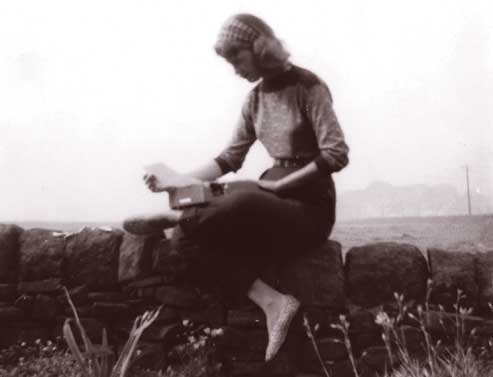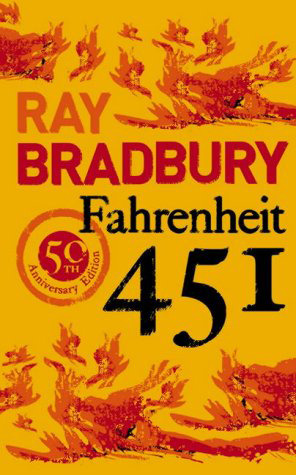The Paris Review's Blog, page 848
February 11, 2013
February in Chicago
 Just a few years ago, I had no idea what cold felt like, and no way to know how to prepare for it. I didn't know my limit.
Just a few years ago, I had no idea what cold felt like, and no way to know how to prepare for it. I didn't know my limit.
Zero degrees. No degrees. None of them. Personally, that’s when I start to lose it. In this range, anyone’s capacity to describe what they are feeling—already a pretty fraught prospect—collapses into mutterings about “hanging in there.”
And then the wind comes off the lake.
February in Chicago: four weeks when it’s acceptable to shower in a hoodie and sleep in a balaclava, wool turtleneck sweater, and thermal socks. Anyone who says they’re not wearing long underwear is either lying or an idiot. I’m wearing one of my three pairs right now, and I’m sitting in my apartment. If I lean forward over the keyboard, I can feel the sun through my bay window on my face.
It’s colder elsewhere, sure. Mostly in the settings of nineteenth-century Russian novels. And as we get toward March, I keep the weather for Duluth in my iPhone rotation, just to stay humble.
But—as anyone around here will remind you over a Schlitz, or eight—Chicago is the largest American city that deals with negative-twenty-degree wind chills on a regular basis.
The wind chill last week got down to negative twenty. In this range, we all become characters in a Jack London story, fighting to keep the blood in extremities we didn’t know we had. And I start to wonder: If I needed to build a fire and all I had was an iPhone, how long would it take for me to freeze to death? Read More »
Dear Enemy
“And by the way, everything in life is writable about if you have the outgoing guts to do it, and the imagination to improvise. The worst enemy to creativity is self-doubt.” ―Sylvia Plath
Love in Amish Country
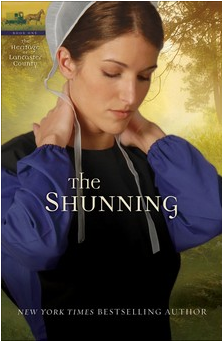 I didn’t know Amish romance novels existed until a trip I took a number of years ago to Shipshewana, Indiana. There my uncle directed an Amish and Mennonite cultural center, and I was ostensibly working on a book about Amish and Mennonite culture, so it seemed a place I should go. I had just turned thirty and was beset with ambivalent, indistinct longings for the Mennonite heritage in which I’d been raised, even though the entirety of my twenties had served as an extended exercise in exodus and estrangement. Still, I went, most excited to locate and eat some peanut butter pie made with flaky, lard-infused crust.
I didn’t know Amish romance novels existed until a trip I took a number of years ago to Shipshewana, Indiana. There my uncle directed an Amish and Mennonite cultural center, and I was ostensibly working on a book about Amish and Mennonite culture, so it seemed a place I should go. I had just turned thirty and was beset with ambivalent, indistinct longings for the Mennonite heritage in which I’d been raised, even though the entirety of my twenties had served as an extended exercise in exodus and estrangement. Still, I went, most excited to locate and eat some peanut butter pie made with flaky, lard-infused crust.
The cultural center my uncle ran was called Menno-Hof, hof a Pennsylvania Dutch word that means something close to “farmyard,” though at Menno-Hof the farmyard is neatly pruned, the pond perfectly ovular, the flower garden precisely planted to approximate a quilt. It seemed to me a beautiful lie in need of some freshly dropped horse patties.
After touring the fastidiously curated exhibits in the barn and adjacent whitewashed Amish farmhouse—replete with a recreated reformation dungeon, a small hurricane room with a vibrating floor and powerful fans, a Conservative Mennonite church where a booming God voice commanded that I consider my spiritual fate—I finally wound up in the gift shop on the brink of both ecstatic revelation and nervous breakdown. Many of the wares there approximated the contents of my mother’s root cellar (raspberry jam and apple butter in glass jars) and the theological section of my father’s library (Nonviolence—A Brief History: The Warsaw Lectures, by John Howard Yoder).
The only items there truly unfamiliar to me were two wire racks full of paperbacks, their covers each backlit with the golden glow of God’s everlasting presence and bucolic perfection: wheat fields, corn fields, rivers and barns beneath cerulean or honey skies. A plain-clothed woman in some state of muted emotional duress gazed into the middle distance beneath her white bonnet. I spun through the racks, elated, repulsed. Could there be anything better, or worse, than Amish romance novels? Read More »
“A Reverse Fahrenheit 451,” and Other News
Sharon Olds, Lena Dunham, and Jennifer Egan on The Bell Jar.
Dark horse Antonio Munoz Molina wins the Jerusalem Book Prize.
Little-known books, blockbuster adaptations: a bittersweet colloquy.
The romance author Jessica Blair is really an eighty-nine-year-old vet named Bill, who has no problem with his nom de plume.
In “a reverse Fahrenheit 451,” firefighters carry books to safety.
February 8, 2013
What to Read on a Stormy Weekend
 Here in the Northeast, we are all hunkering down for what could be a lot of snow, or at least a little slush. Either way, it will be a weekend for staying indoors with a good book, and we asked some of our bookish friends what they recommend for such occasions.
Here in the Northeast, we are all hunkering down for what could be a lot of snow, or at least a little slush. Either way, it will be a weekend for staying indoors with a good book, and we asked some of our bookish friends what they recommend for such occasions.
I Capture The Castle, by Dodie Smith, and Laurie Colwin! —Emily Gould, writer, founder of Emily Books
I am reading a dated but rad detective novel called The Daughter of Time, by Josephine Tey, wherein a detective laid up in the hospital clears King Richard III of the crime of murdering his nephews using deductive logic and dubious speculation. This is part of my ongoing celebration of Richard III’s skeleton’s coming-out-the-closet or whatever you call it. Otherwise keeping busy with hoarding seltzer/Snackwell’s vanilla cremes. So this is a pretty normal weekend for me. —Pete Beatty, editor
Right now I find myself on page 1400 of Proust, by circumstance. Hoping to make some real headway in the next forty-eight. (Yesterday I was reading it on the A train, and this woman got down on her knees to look up to see what was the giant book I had in my hand. Like, she could have asked. Maybe she was saving me the pretension of responding, “Proust.”) —Brian Ulicky, publicist Read More »
A Bookish Wedding
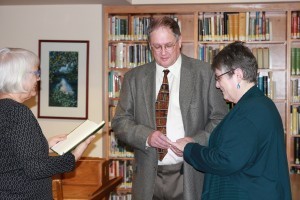 “The library has always been a sanctuary for me. I always felt validated as a child when the librarian went to, what I believed at the time, great lengths to attend to my inquisitiveness,” says Barbara Morrow, who on Friday married David Kurland in the Northwest History Room at Washington’s Everett Public Library. “Today, when I walk into a library, I feel calm. I look around at the stacks and know I can find out about anything. There before me, shelf after shelf, are ideas and knowledge.”
“The library has always been a sanctuary for me. I always felt validated as a child when the librarian went to, what I believed at the time, great lengths to attend to my inquisitiveness,” says Barbara Morrow, who on Friday married David Kurland in the Northwest History Room at Washington’s Everett Public Library. “Today, when I walk into a library, I feel calm. I look around at the stacks and know I can find out about anything. There before me, shelf after shelf, are ideas and knowledge.”
Added the groom, “Libraries are full of ideas. A person needs lots of ideas. And we both love words ... We are the ultimate nerds.”
The two, who met on Match.com after he decided he “just wanted to have lunch with the woman who could write like that,” and who enjoy reading aloud to each other, were married by children’s librarian Theresa Gemmer. Librarian Joan Blacker acted as a de facto wedding planner.
The bride sported book-shaped earrings; the groom a bookshelf-patterned tie. Following cake with the staff, the bride renewed her library card.
Hearty congratulations from everyone at 62 White Street!
What We’re Loving: Carson, Hatterr, Fidel
If you’re going to judge a book by its endpapers, then I recommend Julie Morstad’s The Wayside. I’ve spent a fair amount of time imagining them on the walls of the drawing room I don’t have. It helps that the rest of the book—all new drawings by the Canadian illustrator—is equal parts charming and strange. There’s definitely an Edward Gorey–esque feel to her work, but I also see occasional hints of William Pène du Bois (in a troupe of women acrobats) and Amy Cutler (in the wonderful patterned textiles). I think my favorite drawing may be a double gatefold depicting groups of flatly rendered performing-arts kids doing their thing. It’s Attic form meets Fame. —Nicole Rudick
In the early fifties, a married Cuban socialite has an epistolary romance with a dashing political prisoner. They meet for one night, and the woman bears his child. Meanwhile the young man, freed from prison, seizes command of the struggle against Batista and becomes ruler of their country. It sounds (and reads) like a novel, but Havana Dreams, Wendy Gimbel’s 1998 portrait of Naty Revuelta and her daughter Alina, is a work of intimate reportage, and the relationship of these two women to Fidel Castro takes on an uncanny symbolic weight. The book invaded my own dreams. —Lorin Stein Read More »
The Man in Black, and Other News
“Coeur d’Alene Sen. John Goedde, chairman of the Idaho Senate Education Committee, introduced legislation Tuesday to require every Idaho high school student to read Ayn Rand’s Atlas Shrugged and pass a test on it to graduate from high school.” (When questioned, Goedde clarified, “I don’t plan on moving this forward—it was a statement.”)
“Jane Austen has been dead for close to two hundred years, but it’s hard to imagine she’s gotten much rest in her grave in Westminster Abbey, what with all the rewrites, updates and zombifications of her work.” Enough already! says Carolyn Kellogg.
“Son, where are your books on trains?” On selling books to Johnny Cash. (Spoiler: as amazing as it sounds.)
Yes, there is a hotel designed to look like Joseph Conrad’s steamer. Ten hotels based on literature.
February 7, 2013
Virginia Woolf, on Pancakes and Porridge
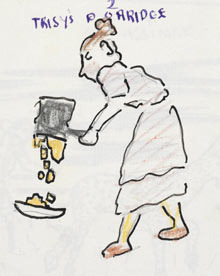 “When in a good and merry mood Trisy would seize a dozen eggs, and a bucket of flour, coerce a cow to milk itself, and then mixing the ingredients toss them 20 times high up over the skyline, and catch them as they fell in dozens and dozens and dozens of pancakes. But her porridge was a very different affair ... It dolloped out of a black pan in lumps of mortar. It stank: it stuck.”
“When in a good and merry mood Trisy would seize a dozen eggs, and a bucket of flour, coerce a cow to milk itself, and then mixing the ingredients toss them 20 times high up over the skyline, and catch them as they fell in dozens and dozens and dozens of pancakes. But her porridge was a very different affair ... It dolloped out of a black pan in lumps of mortar. It stank: it stuck.”
—From a series of sketches Woolf wrote for her nephews in their paper, The Charleston Bulletin. Illustration by Quentin Bell.
Vanity of Vanities
On February 7, 1497, in the midst of carnival, the charismatic preacher Girolamo Savonarola inspired a falò delle vanità, exhorting his followers to burn immoral objects in Florence’s Piazza della Signoria. Tinder included cosmetics, mirrors, Boccacio’s books, artwork, clothing, instruments, and playing cards. (Some say that Botticelli, a devotee, was moved to burn some of his work, but this is speculation.) While these bonfires were not uncommon, the scale of this one made it the most famous. Obviously, in memoriam, we bring you the trailer for the 1990 film adaptation of the 1987 Tom Wolfe novel. Also: everyone was in that movie!
The Paris Review's Blog
- The Paris Review's profile
- 305 followers


